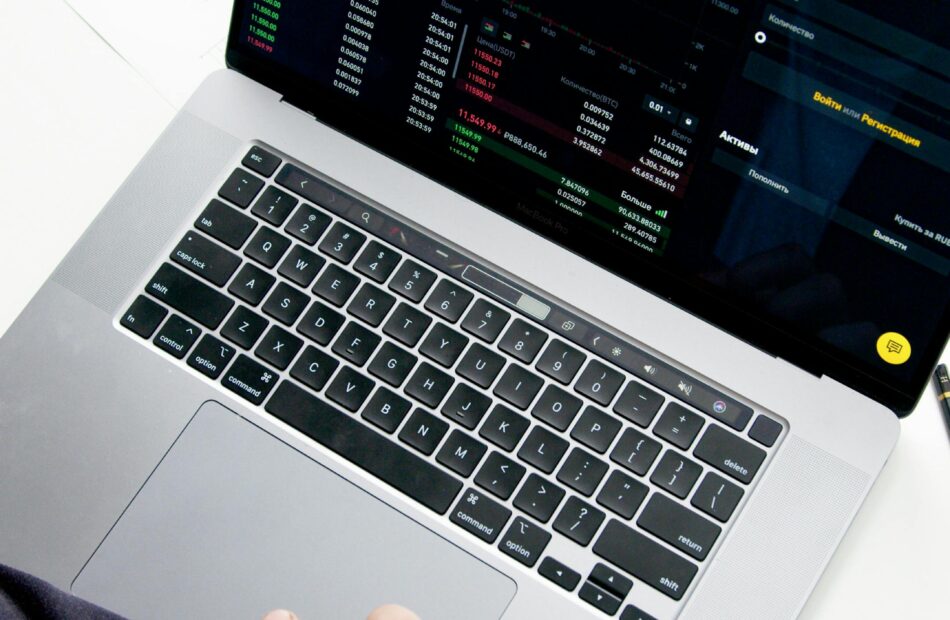OpenSea urges SEC to exclude NFT marketplaces from regulator’s remit
Non-fungible token marketplace OpenSea has urged the US Securities and Exchange Commission to exclude NFT marketplaces from regulation under federal securities laws.The SEC needs to “clearly state that NFT marketplaces like OpenSea do not qualify as exchanges under federal securities laws,” OpenSea general counsel Adele Faure and deputy general counsel Laura Brookover said in an April 9 letter to Commissioner Hester Peirce, who leads the agency’s Crypto Task Force.Faure and Brookover argued that NFT marketplaces don’t meet the legal definition of an exchange under US securities laws as they don’t execute transactions, act as intermediaries or bring together multiple sellers for the same asset.“The Commission’s past enforcement agenda has created uncertainty. We therefore urge the Commission to remove this uncertainty and protect the ability of US technology companies to lead in this space,” Faure and Brookover wrote.OpenSea’s legal team has asked the SEC to issue informal guidance on NFT Marketplaces. Source: SEC“In preparing this guidance, the Crypto Task Force should specifically address the application of exchange regulations to marketplaces for non-fungible assets, similar to the recent staff statements on memecoins and stablecoins,” Faure and Brookover added. Under a notice published on April 4, the SEC said stablecoins that meet specific criteria are considered “non-securities” and are exempt from transaction reporting requirements.Meanwhile, the SEC’s division of corporation finance said in a Feb. 27 staff statement that memecoins are not securities under the federal securities laws but are more akin to collectibles.NFT marketplaces don’t fit broker definition, says OpenSeaFaure and Brookover argued the Crypto Task Force should also exempt NFT marketplaces like OpenSea from having to register as a broker, arguing they don’t give investment advice, execute transactions, or custody customer assets.“We ask the SEC to clear the existing industry confusion on this issue by publishing informal guidance. In the longer term, we invite the Commission to exempt NFT marketplaces like OpenSea from proposed broker regulation,” they said.Related: OpenSea pauses airdrop reward system after user backlashUnder the Trump administration, the SEC has slowly been walking back its hardline stance toward crypto forged under former Chair Gary Gensler.The regulator has dismissed a number of enforcement actions it previously launched against crypto firms and has dropped probes into crypto companies over alleged securities law violations, including one into OpenSea.Magazine: Trump-Biden bet led to obsession with ‘idiotic’ NFTs —Batsoupyum, NFT Collector
Bitcoin ‘significantly de-risked here’ as nearly 80% of cyclical price correction is done — Analyst
Bitcoin’s (BTC) futures market reflects a possible price cooldown after the cryptocurrency’s multiple weeks of correction. Data from CryptoQuant indicated that the BTC-USDT futures leverage ratio with respect to open interest (OI) has halved since peaking in early 2025. Bitcoin estimated futures leveraged ratio. Source: CryptoQuantThis significant de-leveraging has occurred because of massive liquidations over the past few weeks, which has effectively taken a majority of traders out of the market. Thus, the current market conditions indicate a healthier market reset, which is not overheated and could potentially pave the way for a steady price recovery. Bitcoin’s open interest dropped 28% from $71.8 billion on Dec. 18 to $51.8 billion on April 8. This underscores the magnitude of the current deleveraging event. Although this may induce short-term volatility, as few market players might control the price, it also positions BTC for stability in the long term, offering an advantage in the current uncertain trend. Related: Bitcoin futures divergences point to transitioning market — Are BTC bulls accumulating?$70K Bitcoin is the worst-case scenario, says analystIn an X post, Sina, the co-founder of 21st Capital, presented an update on his Bitcoin Quantile Model and said that “Bitcoin is getting significantly de-risked here.” Bitcoin Quantile Model. Source: X.comThe analyst explained that Bitcoin might have already completed 75-80% of its correction, declining from $109,000 to $74,500. Historically, prices have fallen by as much as 34% during the six-to-eight-week span of such trends. Currently, Bitcoin has dropped 31% from its all-time high, and a further decline to $72,000-$70,000 would bring it to approximately 34%. Sina added,“Absent a recession, $70K is my worst-case scenario. While the macro backdrop remains grim and further sell-off is possible, we think Bitcoin is deeply undervalued for a long-term investor.”However, the likelihood of an immediate recovery remains low, as Bitcoin researcher Axel Adler Jr. expects BTC to move sideways in the “volatility corridor.” Bitcoin support and resistance level. Source: X.comThe volatility corridor identified a price range of $75,000 to $96,000, outlined with the help of short-term holders’ realized prices over different time periods. Adler Jr. said that it was possible that BTC would consolidate between these levels over the next few weeks but warned that the price must hold a position above the 365-day simple moving average. A break below the key indicator could potentially lead to a new yearly low below the $74,500 level, with the ideal price being $70,000, as noted earlier. Related: Trump tariffs reignite idea that Bitcoin could outlast US dollarThis article does not contain investment advice or recommendations. Every investment and trading move involves risk, and readers should conduct their own research when making a decision.
ECB exec renews push for digital euro to counter US stablecoin growth
The European Central Bank is intensifying its warnings over stablecoin adoption, with one of its top officials calling for a digital euro to curb the influence of US dollar-pegged stablecoins across the continent.ECB executive board member Piero Cipollone has penned another article highlighting concerns over the growing popularity of US dollar stablecoins, arguing that launching a central bank digital currency (CBDC) could help preserve the eurozone’s monetary sovereignty.A potential digital euro “would limit the potential for foreign currency stablecoins to become a common medium of exchange within the euro area,” Cipollone wrote in a statement published April 8 on the ECB’s official website.The remarks follow a string of similar public statements from Cipollone, who has been a vocal advocate for a digital euro as a strategic response to the dominance of dollar-backed stablecoins in Europe.A “public-private partnership to retain sovereignty”In the latest piece, Cipollone reiterated that excessive reliance on foreign providers — including stablecoins as well as international card schemes — compromises the monetary sovereignty of Europe.“It also underscores the urgent need for a digital euro. Failing to act would not only expose us to significant risks but also deprive us of a great opportunity,” the central banker said.ECB’s executive board member Piero Cipollone. Source: BloombergCipollone also cited concerns about the United States’ increasingly crypto-friendly stance under the current administration, including efforts to promote dollar-based stablecoins globally.Related: Lawmaker alleges Trump wants to replace US dollar with his stablecoin“They could potentially result not just in further losses of fees and data, but also in euro deposits being moved to the US and in a further strengthening of the role of the dollar in cross-border payments,” he said, adding:“Faced with these challenges, we need a public-private partnership to retain our sovereignty. The digital euro — as a sovereign European means of payment based on EU legislation — would be the cornerstone of this partnership.”ECB wants to promote cash but can’t do it onlineCipollone also highlighted the “vital role of cash” in ensuring financial inclusion and resilience, stating that cash remains a “cornerstone of the European financial system” and is its only sovereign means of payment.However, a growing preference for digital payments has limited the use of cash amid the rapid growth of online shopping, which now accounts for one-third of European retail transactions, he said.“Cash cannot be used online, and it is often not possible to pay using a European payment service, meaning we need to rely on non-European payment systems,” Cipollone added.“The time to act is now,” he said. “Making progress on both the digital euro regulation and the regulation on the legal tender status of cash has become urgent if we are to increase our resilience to possible disruptions and reverse our ever-increasing dependence on foreign companies.”Despite the ECB’s ongoing efforts, the proposed digital euro has faced criticism and skepticism among European consumers, especially around data privacy concerns.An ECB working paper on the digital euro published in March showed that European consumers are not interested in adopting a digital euro, with many seeing little value in the potential CBDC.Magazine: Stablecoin for cyber-scammers launches, Sony L2 drama: Asia Express
Bitcoin ETFs lose $326M amid ‘evolving’ dynamic with TradFi markets
The evolving relationship between Bitcoin and traditional financial markets is under renewed pressure as global investors flee risk assets amid intensifying US trade tensions.US-listed spot Bitcoin (BTC) exchange-traded funds (ETFs) recorded their fourth consecutive day of outflows on April 8, with more than $326 million in net redemptions across products, according to data from Farside Investors.BlackRock’s iShares Bitcoin Trust ETF (IBIT) saw the largest sell-off of over $252 million, its biggest daily outflow since Feb. 26.Bitcoin ETF flows, US dollars, millions. Source: Farside InvestorsThe selling pressure follows US President Donald Trump’s April 2 announcement of sweeping reciprocal import tariffs, which triggered a historic $5 trillion wipeout in the S&P 500 over two days.Related: Bitcoin may rival gold as inflation hedge over next decade — Adam BackThe delayed crypto market turbulence after the tariff-related sell-off in traditional markets highlights Bitcoin’s “evolving relationship with traditional markets,” according to Lennix Lai, global chief commercial officer at OKX exchange.Lai told Cointelegraph:“While falling 26% since January’s inauguration, Bitcoin’s relative resilience in the first two days following the tariff announcement — dropping 6% compared to Nasdaq’s 11% decline — suggests a nuanced dynamic emerging between crypto and conventional assets.”Bitcoin initially remained firmly above the $82,000 support level but plummeted below $75,000 on Sunday, April 6.BTC/USD, 1-year chart. Source: Cointelegraph Markets ProSome industry leaders attributed Sunday’s sell-off to Bitcoin’s 24/7 liquidity mechanics, which made BTC the only large liquid asset available for de-risking over the weekend.Related: Bitcoin price can hit $250K in 2025 if Fed shifts to QE: Arthur HayesBitcoin remains tied to global liquidity conditionsWhile there is an “encouraging sign” of a weakening correlation between Bitcoin and equities, Bitcoin’s price trajectory remains tied to global liquidity conditions, Lai said, adding:“Though I see early signs of divergence, I believe Bitcoin remains fundamentally tied to global liquidity conditions, warranting caution amid potential market stresses — whilst gold remains as a hedge against geopolitical instability.”“What’s most significant here isn’t just price action but Bitcoin’s growing conceptual influence — people increasingly view it as a valid strategic reserve asset for diversification in chaotic traditional markets,” Lai added.Other analysts also see the growing money supply as Bitcoin’s main catalyst.“Bitcoin trades solely based on the market expectation for the future supply of fiat,” according to Arthur Hayes, co-founder of BitMEX and chief investment officer of Maelstrom.Magazine: Bitcoin ATH sooner than expected? XRP may drop 40%, and more: Hodler’s Digest, March 23 – 29
Hackers hide crypto address-swapping malware in Microsoft Office add-in bundles
Malicious actors are attempting to steal crypto with malware embedded in fake Microsoft Office extensions uploaded to the software hosting site SourceForge, according to cybersecurity firm Kaspersky.One of the malicious listings, called “officepackage,” has real Microsoft Office add-ins but hides a malware called ClipBanker that replaces a coped crypto wallet address on a computer’s clipboard with the attacker’s address, Kaspersky’s Anti-Malware Research Team said in an April 8 report.“Users of crypto wallets typically copy addresses instead of typing them. If the device is infected with ClipBanker, the victim’s money will end up somewhere entirely unexpected,” the team said.The fake project’s page on SourceForge mimics a legitimate developer tool page, showing the office add-ins and download buttons and can also appear in search results.Kaspersky said it found a crypto-stealing malware on the software hosting website SourceForge. Source: KasperskyKaspersky said another feature of the malware’s infection chain involves sending infected device information such as IP addresses, country and usernames to the hackers through Telegram.The malware can also scan the infected system for signs it’s already been installed previously or for antivirus software and delete itself.Attackers could sell system access to othersKaspersky says some of the files in the bogus download are small, which raises “red flags, as office applications are never that small, even when compressed.” Other files are padded out with junk to convince users they are looking at a genuine software installer.The firm said attackers secure access to an infected system “through multiple methods, including unconventional ones.”“While the attack primarily targets cryptocurrency by deploying a miner and ClipBanker, the attackers could sell system access to more dangerous actors.” The interface is in Russian, which Kaspersky speculates could mean it targets Russian-speaking users.“Our telemetry indicates that 90% of potential victims are in Russia, where 4,604 users encountered the scheme between early January and late March,” the report stated.To avoid falling victim, Kaspersky recommended only downloading software from trusted sources as pirated programs and alternative download options carry higher risks.Related: Hackers are selling counterfeit phones with crypto-stealing malware“Distributing malware disguised as pirated software is anything but new,” the company said. “As users seek ways to download applications outside official sources, attackers offer their own. They keep looking for new ways to make their websites look legit.”Other firms have also been raising the alarm over new forms of malware targeting crypto users. Threat Fabric said in a March 28 report it found a new family of malware that can launch a fake overlay to trick Android users into providing their crypto seed phrases as it takes over the device.Magazine: Bitcoin heading to $70K soon? Crypto baller funds SpaceX flight: Hodler’s Digest, March 30 – April 5
China counters tariffs with yuan devaluation, which is 'bullish for BTC'
With US President Donald Trump imposing 104% tariffs on Chinese imports, Beijing is responding by letting the yuan weaken against the dollar — a move that analysts say could spark the next leg of the Bitcoin bull market.On April 8, the yuan-to-US dollar exchange rate fell to its lowest level since 2023, signaling the Chinese central bank’s readiness to let its currency fluctuate more freely. The US dollar-to-yuan exchange rate on April 8. Source: BloombergWith the trade war ratcheting up, “expectation for China to eventually devalue the currency has jumped and the pressure won’t go away easily,” Ju Wang, head of Greater China FX at BNP Paribas, told Reuters.The yuan’s devaluation could drive the narrative of Chinese capital flight into hard assets, which includes Bitcoin (BTC), according to BitMEX founder Arthur Hayes. “It worked in 2013, 2015, and can work in 2025,” said Hayes.Bybit’s co-founder and CEO, Ben Zhou, agreed, arguing that China will let the yuan weaken to counter the trade war. This means “a lot of Chinese capital flow into BTC, [which is] bullish for BTC,” said Zhou.Source: Ben ZhouBybit is the world’s second-largest crypto exchange by volume and is a popular platform for derivatives traders. In December, the exchange said users in mainland China can now trade freely on the platform without the use of a VPN but that yuan trades are not permitted.Related: $2T fake tariff news pump shows ‘market is ready to ape’Currency volatility is here to stay as US-China trade war heats upCurrency fluctuations are part and parcel of an escalating trade war that pits the two largest economies against each other. Beyond the yuan-dollar trade, investors are bracing for “insane” foreign exchange volatility tied to the trade war, according to Brent Donnelly, the president of Spectra FX Solutions. The US dollar has been in a steady decline since President Trump’s inauguration, with the DXY Dollar Index falling from a high of nearly 110 to the current sub-103 level. The decline between the end of February and early March was one of the sharpest moves in the last decade, according to Julien Bittel, who heads macro research at Global Macro Investor.The DXY tracks the US dollar’s performance against a basket of six currencies, with the euro and Japanese yen having the largest weightings. The US dollar, as measured by the DXY, has weakened considerably in recent months. Source: MarketWatchHistorically, Bitcoin’s price has exhibited a strong inverse relationship with the US dollar, with a weaker greenback associated with a higher BTC price and vice versa.Related: As Trump tanks Bitcoin, PMI offers a roadmap of what comes next
Ripple acquisition of Hidden Road a ‘defining moment’ for XRPL — Ripple CTO
Ripple’s $1.25 billion acquisition of prime broker Hidden Road is a “defining moment” for the blockchain payments company, potentially unlocking more use cases for the XRP Ledger among institutions, said David Schwartz, Ripple’s chief technology officer. “Ripple’s acquisition of Hidden Road is a defining moment for the XRP Ledger and XRP,” Schwartz said on social media on April 8. Hidden Road is a prime brokerage and credit network with more than 300 institutional customers. On a typical day, it clears more than $10 billion and processes more than 50 million transactions across traditional rails. “Now imagine even a portion of that activity on the XRP Ledger — and that’s exactly what Hidden Road plans on doing — not to mention future use of collateral and real-world assets tokenized on the XRPL,” said Schwartz. Source: RippleRipple has long touted the XRP Ledger as a scalable platform for real-world assets (RWAs), having partnered with crypto exchange Archax to launch a tokenized money market fund in November. However, until now, tokenization on the XRP Ledger has been minimal. Industry data tracks only two RWAs on the XRP Ledger valued at roughly $50 million. The XRP Ledger has yet to take off as a tokenization platform. Source: RWA.xyzRelated: VC Roundup: 8-figure funding deals suggest crypto bull market far from overRWA market continues to scaleThe value of onchain RWAs has grown by 9.2% over the past 30 days, bucking a general downtrend in the cryptocurrency market tied to global growth fears and tighter financial conditions. Over that period, the number of asset holders increased by 6.2%, according to RWA.xyz. Analysts across the traditional finance industry expect tokenized RWAs to become a multi-trillion-dollar market by 2030 due to large addressable markets across bonds, commodities, equities, real estate and the M2 money supply. According to various estimates, the value of tokenized securities could reach at least $2 trillion by 2030. Source: Tokenized Asset CoalitionSome of the world’s largest companies are already experimenting with asset tokenization, with CME Group and Google recently partnering to explore how the Google Cloud Universal Ledger could improve capital market efficiency. Prometheum CEO Aaron Kaplan recently told Cointelegraph that regulatory conditions in the United States are ripe for tokenization to really take off. The biggest gap to adoption is a lack of secondary markets for buying and selling tokenized assets. However, this could soon change as crypto-native companies and traditional brokerages compete for market share.Magazine: Block by block: Blockchain technology is transforming the real estate market
Bitcoin’s 24/7 liquidity: Double-edged sword during global market turmoil
Bitcoin and other cryptocurrencies are often praised for offering around-the-clock trading access, but that constant availability may have contributed to a steep sell-off over the weekend following the latest US trade tariff announcement.Unlike stocks and traditional financial instruments, Bitcoin (BTC) and other cryptocurrencies enable payments and trading opportunities 24/7 thanks to the accessibility of blockchain technology.After a record-breaking $5 trillion was wiped from the S&P 500 over two days — the worst such drop on record — Bitcoin remained above the $82,000 support level. But by Sunday, the asset had plummeted to under $75,000.Sunday’s correction may have occurred to due Bitcoin being the only large tradable asset over the weekend, according to Lucas Outumuro, head of research at crypto intelligence platform IntoTheBlock. “There was a bit of optimism last week that Bitcoin might be uncorrelating and fairing better than traditional stocks, but the [correction] did accelerate over the weekend,” Outumuro said during Cointelegraph’s Chainreaction live show on X, adding:“There’s very little people can sell on a Sunday cause most markets are closed. That also enables the correlation because people are panicking and Bitcoin is the largest asset they can sell over the weekend.”Outumuro noted that Bitcoin’s weekend trading can also have upside effects, as prices often rally in calmer conditions.Related: Trump tariff negotiations are ‘all about’ China deal — Raoul PalBitcoin initially “decoupled” from traditional assets after the US stock market saw a $3.5 trillion drop on April 4 as US Federal Reserve Chair Jerome Powell said the Trump administration’s “reciprocal tariffs” could significantly affect the economy and lead to higher inflation.However, Bitcoin fell below $75,000 on April 6 as the panic from traditional markets spread to cryptocurrencies over escalating trade war concerns.Related: Bitcoin price can hit $250K in 2025 if Fed shifts to QE: Arthur HayesMost Bitcoin investors are “all in” and overleveraged — Adam BackAdding to Bitcoin’s 24/7 trading mechanics, numerous Bitcoin holders are overleveraged, according to Blockstream CEO Adam Back.Speaking during a fireside chat with Cointelegraph managing editor Gareth Jenkinson at Paris Blockchain Week 2025, Back said:“The problem with the Bitcoin market is most of the people who are into Bitcoin are all in. So they’ve got no money. And worse, some of them are leveraged or overleveraged and it trades 24/7.”Adam Back during a fireside chat with Cointelegraph’s Gareth Jenkinson. Source: Cointelegraph“On a weekend, there’s not much volume. So you have a worse risk of rapid sort of flash crashes or flash dips that get filled in again,” he said.Back also reiterated his belief that Bitcoin will rival gold over the next decade as a hedge against rising monetary inflation.Magazine: Bitcoin ATH sooner than expected? XRP may drop 40%, and more: Hodler’s Digest, March 23 – 29
The gold standard is back — Stablecoins need to rethink what ‘backing’ really means
Opinion by: William Campbell, advisory lead at USDKGStablecoins were heralded as a breakthrough in the cryptocurrency space as a way to marry the lightning-fast, borderless nature of digital assets with the stability of traditional currencies. They achieve this by pegging their value to reserves like fiat currencies or commodities. Stablecoins are engineered to maintain a fixed exchange rate, typically one-to-one, with the underlying asset.What does “stability” mean? At its core, stability demands three pillars:Reliable collateral: The tangible assets that back the token.Transparency: The ability for anyone to independently verify reserves.Consistent peg maintenance: Robust safeguards against depegging, where a stablecoin’s market value strays from its fixed ratio with the underlying asset.Without these foundational elements, stablecoins are little more than speculative instruments masquerading as safe harbors. In 2022 alone, billions in value evaporated when supposedly “secure” stablecoins lost their pegs, meaning their market prices diverged significantly from their intended 1:1 ratio with an underlying asset — prompting an unsettling question: Can digital assets ever be genuinely stable without demonstrable and independently audited backing?The need for reliable asset-backed modelsRecent market events have exposed severe fundamental weaknesses in privately issued stablecoins. These tokens often rely on opaque mechanisms, inadequate audit practices or collateral that investors cannot independently verify.These shortcomings repeatedly led to sudden “depegging” events, such as the collapse of Iron Finance’s TITAN token in 2021. The overleveraged algorithmic system collapsed to near zero, wiping out billions in liquidity.TerraUSD’s meltdown in 2022 also highlighted a similar vulnerability, with the stablecoin’s value disintegrating quickly, intensifying doubts about algorithmic models lacking transparent reserves.Meanwhile, partially collateralized and so-called “fully audited” stablecoins have faced scrutiny for inconsistent disclosure practices. Even well-known issuers must constantly prove their reserves are sufficient and legitimate.Recent: The state-backed stablecoin coin to change Kyrgtzstan’s (and global) economyThese issues primarily stem from insufficient oversight and ambiguous collateral management practices by private issuers. Investors typically have limited means to independently verify reserves, fueling persistent doubts about whether the stated backing genuinely exists or whether tokens are properly collateralized.Only models with tangible asset support and verifiably documented reserves can genuinely deliver the stability that digital assets promise. Through transparent frameworks, we can rebuild trust and usher in a new era of reliable digital finance. These events underscore a universal truth: True stability is forged through auditable oversight and verifiable reserves, not hollow branding.Gold is a timeless anchor Gold has served as humanity’s ultimate store of value for millennia, preserving wealth through wars, economic collapses and pandemics. Its scarcity, intrinsic worth and universal acceptance have made it a refuge when institutions falter — evidenced by its 25% surge during the 2020 market crash as investors fled volatile assets.Gold’s value transcends borders and ideologies, resting on tangible scarcity rather than hollow promises. For example, while the US dollar has lost 96.8% of its purchasing power since 1913, gold has consistently preserved and even grown its purchasing power. This track record positions it as an ideal anchor for digital assets seeking stability in a volatile crypto landscape.Critics of gold might point to its storage and custodial costs, along with the logistical challenges of physically moving bullion. Modern vaulting solutions and robust insurance measures have, however, largely mitigated these concerns, particularly when combined with blockchain-based audit mechanisms.Gold-backed stablecoins capitalize on this timeless reliability, pairing physical gold’s enduring value with blockchain’s efficiency. By linking digital tokens directly to physical gold, they sidestep the speculative risks of cryptocurrencies and the inflationary pitfalls of government-issued money. Blockchain-enabled gold tokenizationBlockchain technology removes the traditional obstacles to gold ownership by enabling fractional digital ownership and global trading without intermediaries. Physical gold stored in regulated vaults is digitized into tokens, each representing a precise fraction of the underlying asset. Every transaction is immutably recorded on a decentralized ledger, enabling investors to continuously check reserves in real time through automated smart contracts.This system overcomes gold’s historic limitations, including illiquidity and high storage costs, while eliminating the opacity of traditional reserve management. Merging gold’s tangible security with blockchain’s immutable record-keeping, the system also engineers trust directly into the architecture.This approach creates a stablecoin model unlike any other, where verifiable backing is the system’s backbone, not merely promised on paper.Creating stablecoins that truly deliver stabilityGold-backed stablecoins merge blockchain’s inherent accountability with gold’s stability, establishing a new class of digital assets resistant to volatility. Anchoring digital tokens to gold’s intrinsic value, this model sidesteps the volatility of speculative cryptocurrencies and the inflationary risks of government-issued currencies. The result is a stablecoin engineered for trust, where stability isn’t promised by code or institutions — it’s bolstered by tangible scarcity and blockchain’s unyielding transparency.Trust as a cornerstoneThe primary challenge facing stablecoins is establishing user trust. This trust can’t be built solely on a company’s reputation. It must be earned through independently verifiable collateral, real-time audits and clear regulatory oversight.Innovative hybrid models showcase this approach effectively. The government strictly regulates and audits the gold reserves in a hybrid model to maintain verifiable 1:1 backing. The private entities handle token issuance, trading and compliance processes, carefully separating state verification of collateral from private management of operational functions.This public-private partnership ensures rigorous oversight without creating a central bank digital currency. As they divide responsibilities, the model establishes a system where the government guarantees authenticity and collateral integrity while private enterprises handle operational efficiency, ensuring a balanced and decentralized yet trustworthy environment.Toward a more trustworthy digital financial ecosystemGenuine stability in digital finance emerges not from marketing slogans but from transparent mechanisms and verifiable collateral.The future of digital finance lies in combining blockchain’s revolutionary transparency with the historically proven stability of gold, especially under government auditing and privately managed structures. As more asset-backed solutions emerge, institutions, regulators and everyday users will adopt stablecoins that transparently deliver on their stability promises.This evolution marks a pivotal shift. Investors will no longer accept vague assurances. Investors demand concrete stability. Gold-backed stablecoins, blending ancient reliability with blockchain innovation, will lead the next generation of digital financial instruments, ensuring stablecoins fulfill their original promise — stability without compromise.Opinion by: William Campbell, advisory lead at USDKG.This article is for general information purposes and is not intended to be and should not be taken as legal or investment advice. The views, thoughts, and opinions expressed here are the author’s alone and do not necessarily reflect or represent the views and opinions of Cointelegraph.
Former Kraken execs acquire real state firm Janover, disclose SOL treasury plans
A team of former Kraken executives has taken control of Janover, with Joseph Onorati, former chief strategy officer at Kraken, stepping in as chairman and CEO, following the group’s purchase of over 700,000 common shares and all Series A preferred stock.Parker White, former director of engineering at Kraken, was appointed as the new chief investment officer and chief operating officer. The group bought 728,632 shares of Janover common stock and all 10,000 shares of Series A preferred stock. Marco Santori, former chief legal officer at Kraken, will join the board. Janover is a real estate financing company that connects lenders and buyers of commercial properties. The company stock price saw an 840% rise on April 7 as part of the deal. According to a statement, the company’s new leadership has plans to create a Solana (SOL) reserve treasury. The plans include acquiring Solana validators, staking SOL and additional purchases of the token. Janover stock price on April 7. Source: Google FinanceIn tandem with the announcement, Janover revealed that it had raised $42 million in an offering of convertible notes. Convertible notes are a type of debt instrument that can later be converted to equity at a certain price. Participants in the funding round include Pantera Capital, Kraken, Arrington Capital, Protagonist, Third Party Ventures, and others.Janover announced in December 2024 that it had begun accepting payments for its real estate services in Bitcoin (BTC), Ether (ETH), and SOL. Crypto treasury companies: Bold or risky?In August 2020, Strategy became one of the first publicly traded companies to hold Bitcoin on its balance sheet. Since then, several companies have followed suit, including Japan’s Metaplanet, Semler Scientific, and Tesla.In many cases, these companies have seen rises in their share prices as investors sought exposure to digital assets through traditional financial products. Some outsiders have criticized this approach due to the cryptocurrencies’ volatility and some companies’ financing methods, such as convertible note offerings used by Strategy. SOL has seen significant volatility in the past 365 days, according to MarketVector. The coin has risen as to high as $274.50 and fallen to a low of $107.68. Magazine: Financial nihilism in crypto is over — It’s time to dream big again










